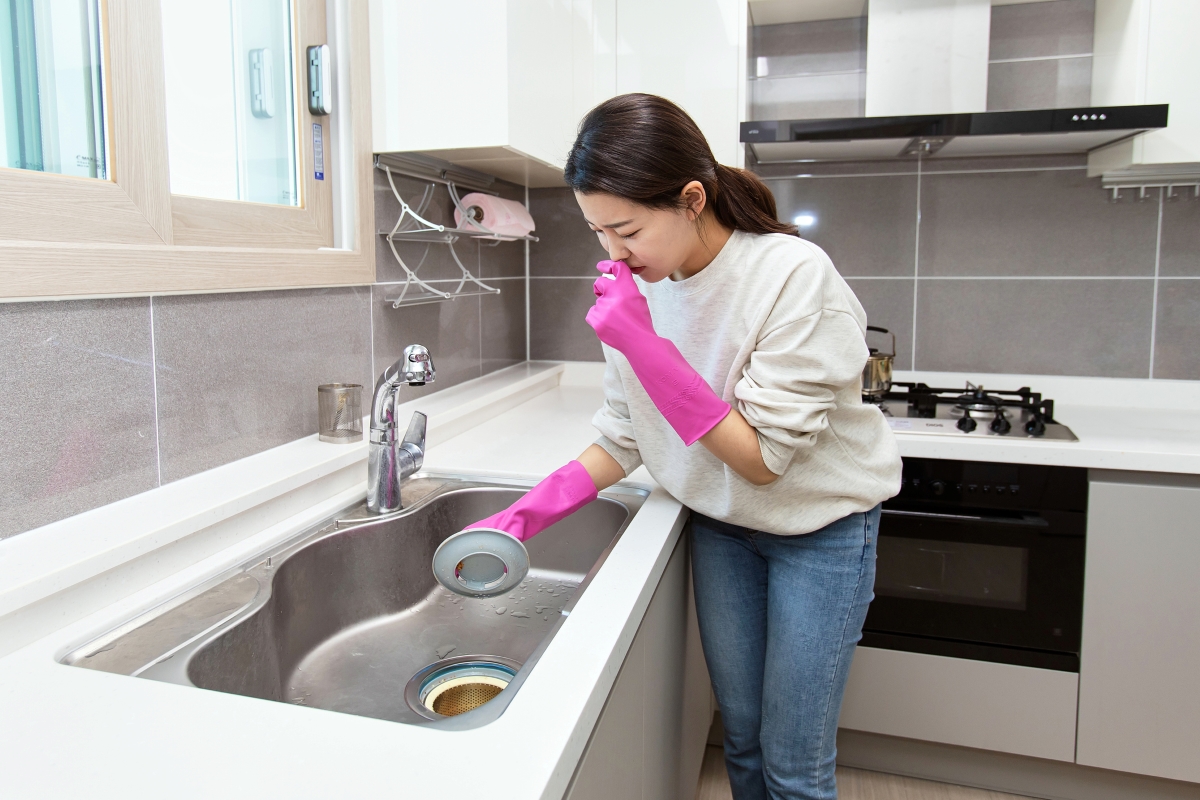We may earn revenue from the products available on this page and participate in affiliate programs. Learn More ›
All your beautiful furnishings and well-planned design are for naught if your house is plagued by an unfortunate odor. “Household odors come from a variety of sources,” says Laura Haupert, Ph.D., chief scientific officer at OMI Industries, a maker of natural odor eliminators. “In the kitchen, discarded food scraps, dishwashers, garbage disposals, and ovens can be sources of bad odor.”
Among unpleasant household odors, mold and mildew smells are undoubtedly some of the worst. And unfortunately, these smelly fungi are all too common, lurking in the dark, damp corners of your home. Rest assured that you can get rid of that mildew smell pretty easily, as long as you can identify the source of the odor.
What makes a house smell musty?
That stale, funky smell that assaults your senses the minute you step inside your home is quite possibly caused by mold or mildew, which in turn is caused by moisture. Even diligent cleaner-uppers can be caught off guard by a leaky something or other that leads to fungi growth and the ensuing odors.
Opportunist mold and mildew spores, which occur naturally in air, can take advantage of a spot of moisture and begin reproducing, creating an unsightly and smelly mess.
Mildew vs. mold: What’s the difference?
What is mildew? According to the EPA, “mildew refers to certain kinds of mold or fungus.” More specifically, the term applies to particular types of mold, especially those with a flat, white or gray, powdery appearance. What we usually call mold is typically less flat and more fuzzy. It can be white, green, brown, or black in color. Both mold and mildew are fungi.
What does mildew smell like? What does mold smell like?
Mold and mildew both have a stale, musty, earthy smell. Their odor has been compared to that of wet socks or rotting wood. Mold’s odor is stronger and more pungent, and sometimes described as “meaty.” Mold also smells “damp.”
However it’s described, the smell of mildew and mold is definitely not appealing and is certainly something you’ll want to address.
Before You Begin
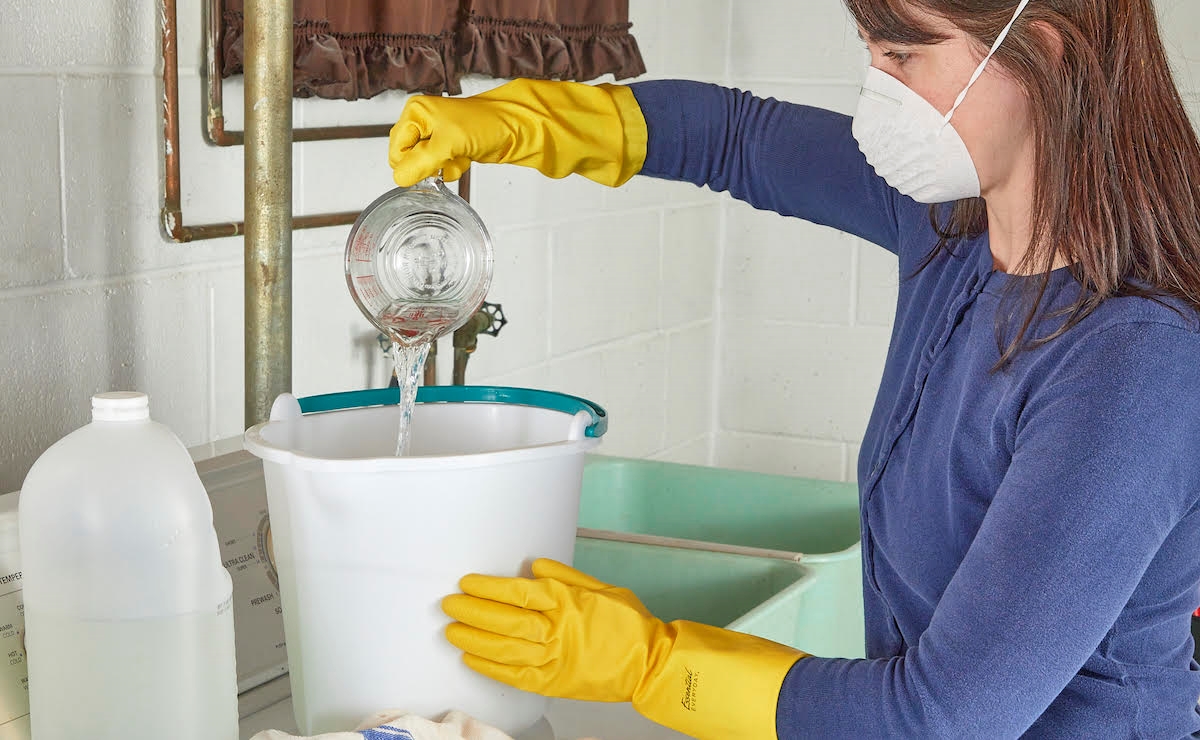
Don protective gear, such as gloves, goggles, and mask, before working on any mold or mildew mitigation project. The CDC cautions that “exposure to molds can lead to symptoms such as stuffy nose, wheezing, and red or itchy eyes, or skin.” People who have asthma or allergies to molds may have more intense reactions, the agency says.
Tools & Materials
Bobvila.com may earn a commission from purchases made through these links.
- Soft-bristle brush
- Ammonia
- 3 percent hydrogen peroxide
- Bleach
- Dishwashing liquid
- Coconut oil or mineral oil
- Vegetable oil-based glycerin
- Liquid dry cleaning solvent
How to Get Rid of Musty Smells in Your Home
Step 1: Locate the cause of the odor.
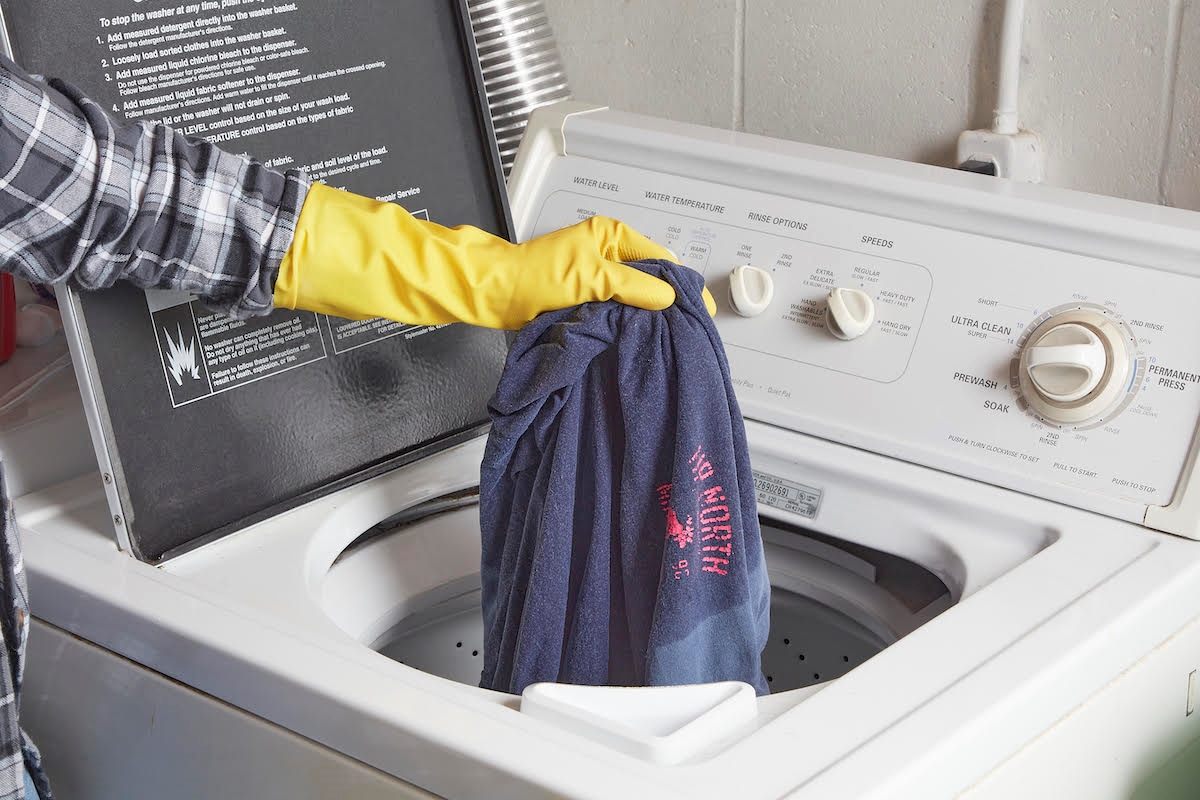
Before you can clear up the odor, you need to determine what’s causing the smell. “Start off by investigating common sources of mold,” says Haupert. “This would include inspecting the bathroom for evidence of mold and mildew. It is important to check window frames, doors, and wall corners for moisture and warping. Carpet can harbor mold and mildew as well.”
Other sources of stink from mold and mildew:
- Clothing and other fabrics
- Houseplants
- Shower curtains
- Washing machines
- Mattresses
- Area behind the refrigerator
- Carpet
As you search, be thorough. In the bathroom, take down the shower curtain and temporarily relocate toiletries that would obscure your view of the likeliest breeding grounds (such as grout lines or tub caulking). In the basement, clean up old newspapers, cardboard boxes, and other disposables, and throw away any of these that are impacted by mold or mildew. Focus your attention on surfaces vulnerable to moisture.
Step 2: Repair any leaks.
After you’ve found the mildew or mold that’s causing the smell, you need to determine the source of the moisture that’s enabling the fungus to grow, and repair it. “Major areas in a home that are often plagued by mold and mildew include showers, under sinks, in bathroom walls, windowsills, and inside of AC/heat vents, as well as attics and basements,” says Haupert.
Whether it’s leaky plumbing, water seeping in from an improperly graded backyard, a leaky roof, or malfunctioning air conditioning units, take steps to repair and eliminate the problem so you’re not continually having to clean up mold and mildew. “Finding and eliminating the mold/ mildew source is important, as mold spores negatively affect the air quality and lead to health effects after prolonged exposure,” says Haupert, echoing the CDC’s warnings.
Step 3: Eliminate mildew from surfaces.
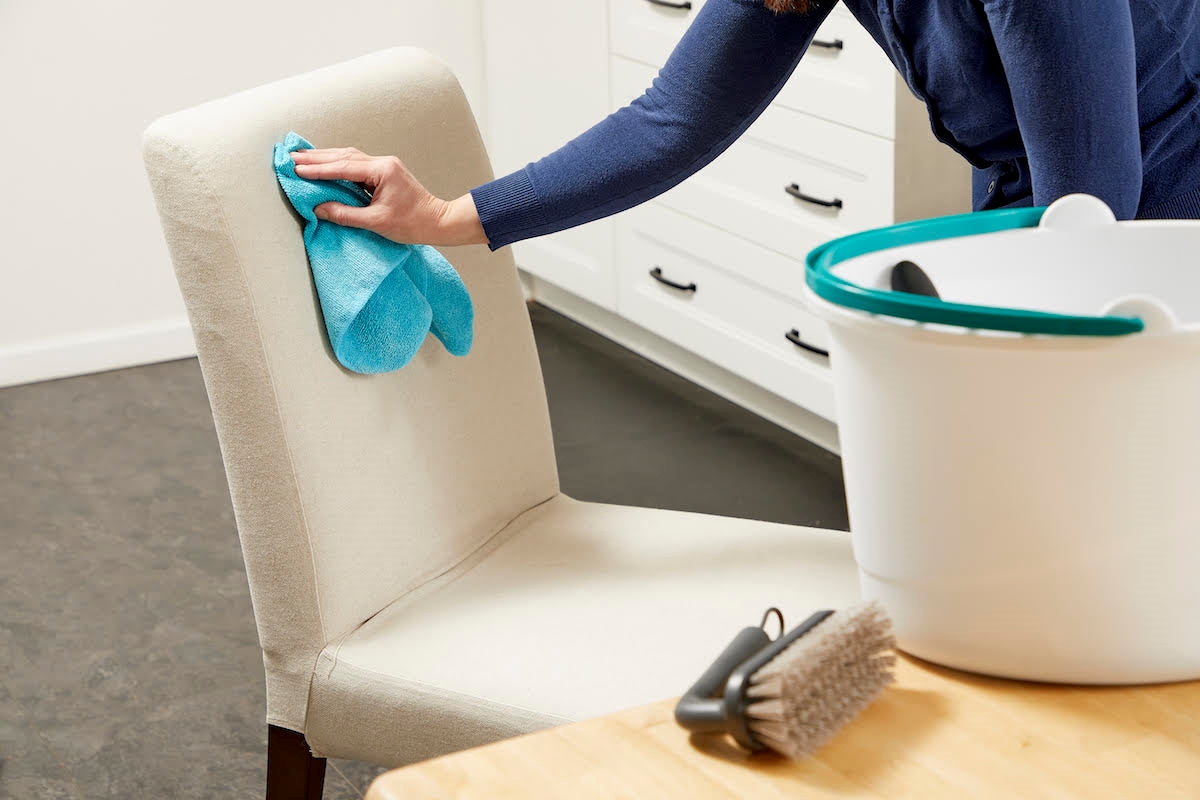
Once you have identified the mildewed area and repaired or eliminated the source of the moisture, it’s time to get to work. Choose the method that corresponds with the type of surface you’re cleaning.
How to Remove Mildew From Most Surfaces
Rugs or carpet
- Use a dehumidifier to remove moisture from the air, as well as from the rugs or carpet.
- Open windows to encourage air circulation.
- If possible, take rugs outside to bathe in the sunlight—one or two days of sun exposure will kill spores.
- Vacuum the area thoroughly to get rid of the spores. Immediately dispose of the vacuum bag, if using one, or empty and clean the canister outside. When you’re done, clean the vacuum and replace filters (or clean washable ones).
- Using a solution of dishwashing soap and water, scrub the affected area with a sponge or rag.
- Rinse the area with a clean, damp rag or sponge.
- Allow the rug to dry thoroughly.
- If the stain remains, make a “dry spotter”:
- Mix 1 part coconut oil or mineral oil and 8 parts liquid dry cleaning solvent.
- Dampen a clean sponge or microfiber cloth with the mixture and pat the stain.
- Blot with a dry towel and allow to dry thoroughly.
- If the stain remains still, make a “wet spotter”:
- Mix 1 part vegetable oil-based glycerin, 1 part liquid dishwashing detergent, and 8 parts water in a spray bottle.
- Spray this solution on the stain and scrub.
- Rinse and dry thoroughly.
Upholstered furniture
- Scrub the furniture with a soft-bristled brush to remove spores; work outside, if possible.
- Use an upholstery attachment to vacuum the fabric. (When finished, dispose of the vacuum bag or empty and clean the canister outside, and dispose of or clean any vacuum filters.)
- Apply dry spotter solution (see recipe above) with sponge or microfiber cloth. Alternatively, you can use a solution of 1:1 rubbing alcohol and water.
- Dab area with water to rinse, and blot moisture.
- Allow furniture to dry.
Hard-surface floors (including tile, stone, wood, and vinyl)
- Mix warm water with a few drops of dishwashing soap in a bucket.
- Add a few drops of ammonia to the soapy water.
- Dip a clean cloth in the mixture and scrub the stain.
- Rinse the floor, and then wipe dry.
If the floor stain persists, consider using a commercial mildew remover.
Clothing
- Take clothing outdoors and brush off mildew.
- Apply stain remover to affected area.
- Launder as usual.
- If the stain remains, soak the item in ¼ cup bleach mixed with ¾ cup water (if safe for the fabric).
- Alternatively, treat the stain with a paste made of equal parts salt and lemon juice; allow the item to dry in direct sunlight.
Nonporous, bleach-safe surfaces
- In a large bucket, mix 1 part bleach to 4 parts water.
- Scrub surfaces with the bleach mixture.
- Use a clean, damp rag to wipe away bleach residue.
- Use a clean, dry cloth to thoroughly dry the area.
If none of these mildew-removing methods work for you, or if you’re unable to find the source of the mildew, it may be time to call professional mold remediators. They’ll use special equipment and treatment methods to rid your space of mildew.
Step 4: Remove mold from surfaces.
Mold can be trickier to remove than mildew, and large areas of mold damage almost always require professional abatement. You can remove mold using the same methods described above for removing mildew, or you can try this method for nonporous surfaces:
- Scrape off as much of the mold as you can, using a tool that won’t harm the surface you’re cleaning.
- Use a spray bottle to apply 3 percent hydrogen peroxide to the affected area.
- Thoroughly douse the mold.
- Wait 5 to 10 minutes, or until the peroxide is no longer fizzing.
- Use a rag or brush to scrub the surface until the mold is gone.
- Wipe the area clean, and repeat the process if necessary.
Step 5: Let the affected areas dry.
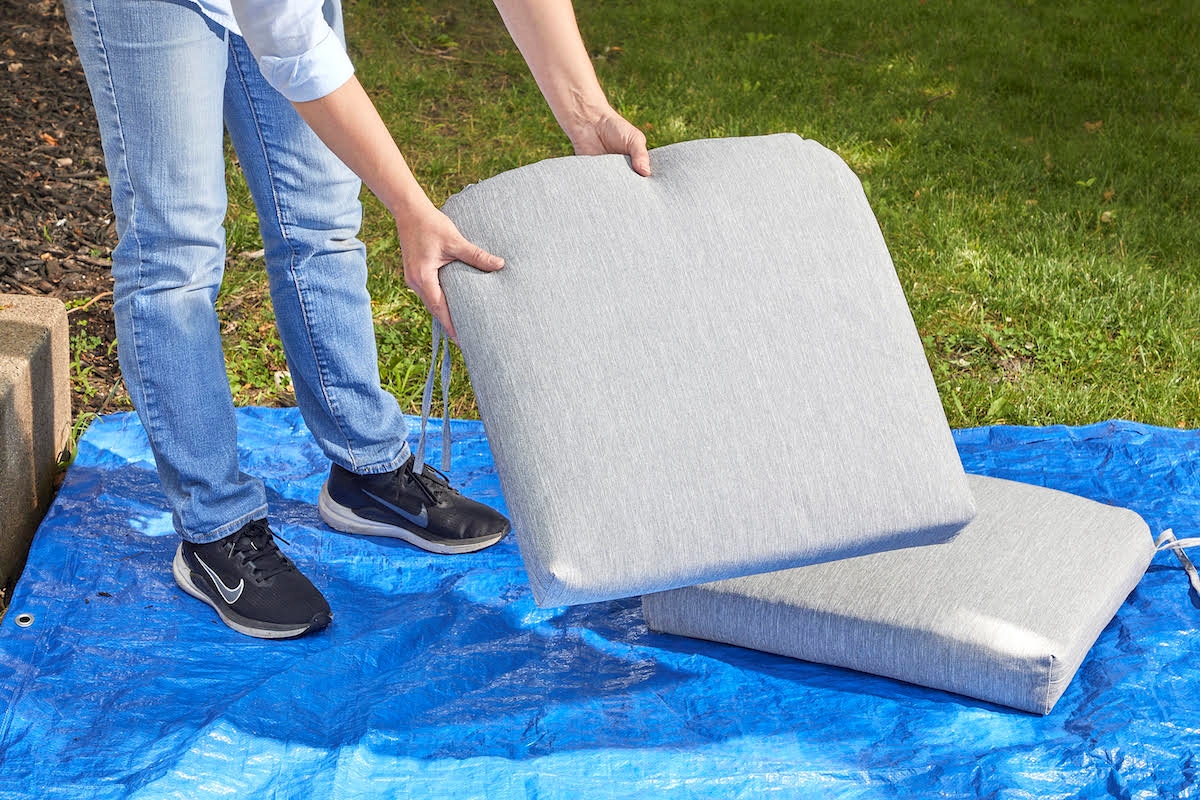
The final step in any mold or mildew removal process is to thoroughly dry the area. If the area is small, a dry rag might do the trick. However, larger areas, or those that are porous, will benefit from the use of fans and dehumidifiers to dry the area completely so additional fungi growth will be unlikely.
It’s a good idea to place easy-to-move items outdoors in the sunshine, which will dry them out and kill any remaining spores.
How to Prevent Mildew and Mold
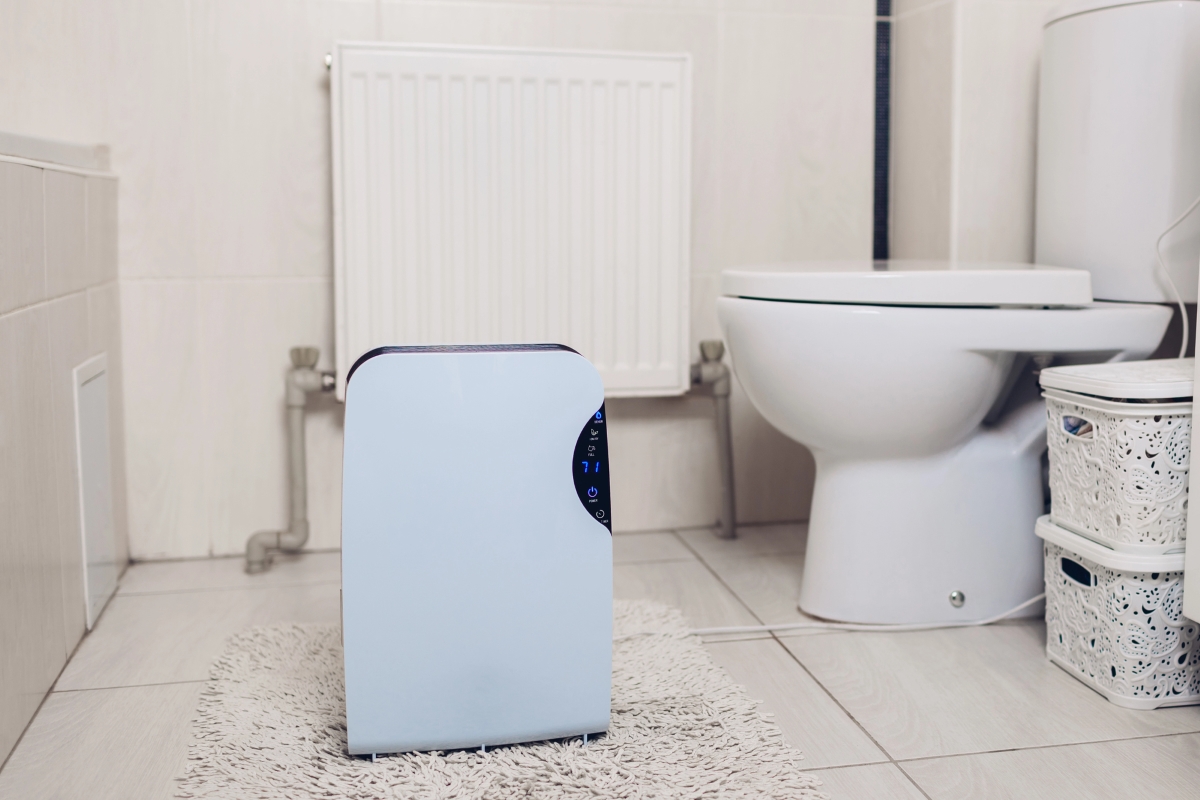
The best strategy for dealing with mold and mildew smells is to make sure they don’t get a chance to develop in the first place. Follow these best practices to help keep your spaces dry and mildew- and mold-free:
- Install dehumidifiers in problem areas.
- Use ceiling fans to keep areas dry, particularly in humid rooms like the kitchen and laundry.
- Use exhaust fans in bathrooms to remove steam.
- In damp areas, fill a large container about halfway with a moisture absorber like baking soda, rock salt, charcoal briquettes, or kitty litter. Replace every month or so.
- Perform regular checks of your home’s systems to ensure there are no water leaks, and promptly fix any leaks in your home’s roof, walls, or plumbing.

